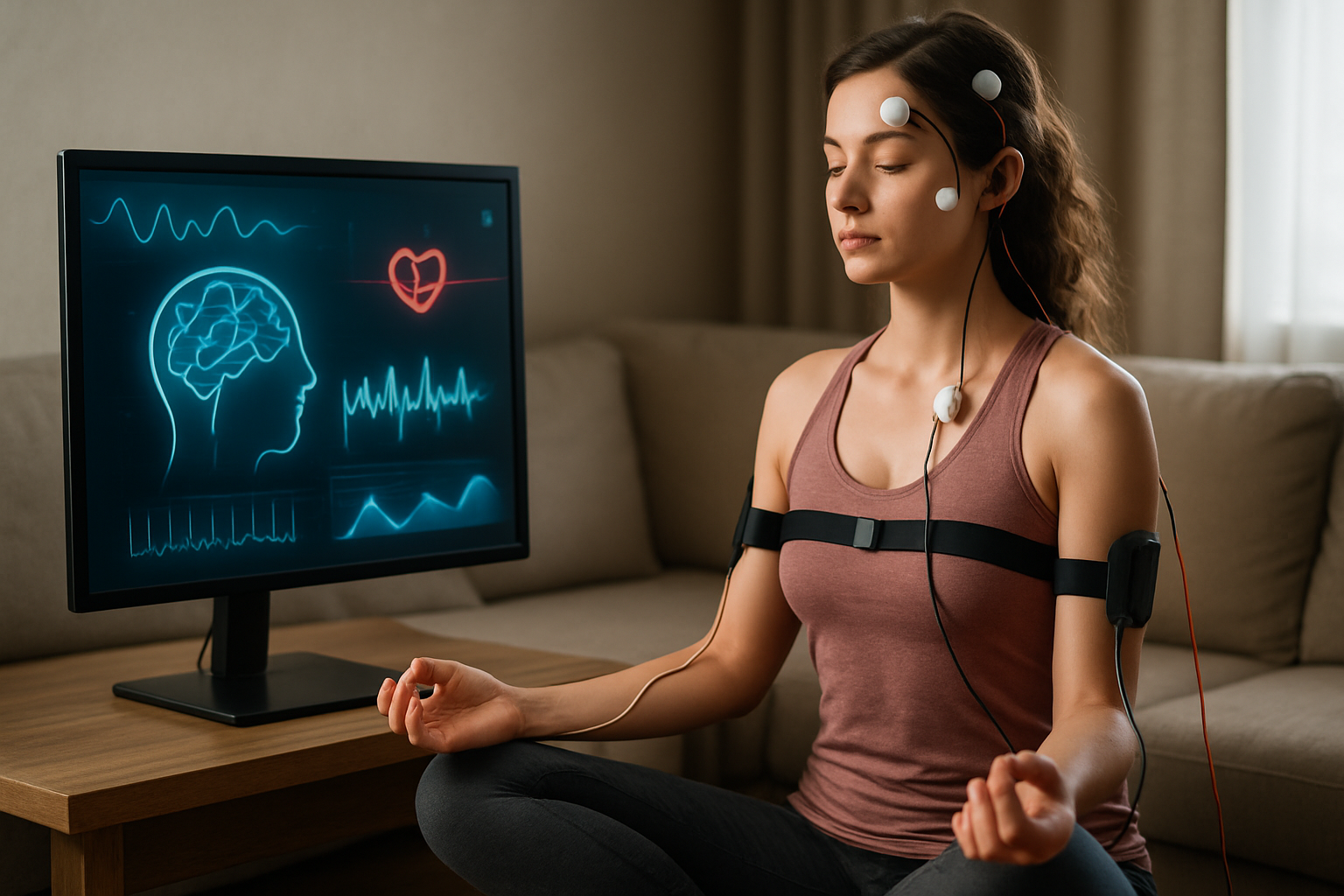Biofeedback Training: Harnessing Your Body's Signals for Optimal Wellness
How well do you know your body's signals? Imagine if you could understand and control your physiological responses to stress, pain, or anxiety. This isn't science fiction – it's the reality of biofeedback training. As we delve into this fascinating field, prepare to discover how this innovative approach is revolutionizing personal health management and offering a new frontier in mind-body medicine.

The concept builds on ancient practices like meditation and yoga, which have long emphasized the mind-body connection. However, biofeedback brings a modern, scientific approach to this age-old wisdom, utilizing technology to provide real-time physiological data.
Understanding the Biofeedback Process
At its core, biofeedback involves measuring specific physiological processes and presenting this information to the individual in real-time. Common parameters monitored include heart rate, muscle tension, skin temperature, and brain waves.
Specialized sensors detect these signals, which are then displayed on a monitor or through audio cues. By observing these outputs, individuals learn to recognize and influence their body’s responses, gradually gaining greater control over functions typically considered automatic.
Applications in Modern Healthcare
The versatility of biofeedback has led to its adoption across various medical fields. In pain management, it’s proven effective for conditions like chronic back pain and fibromyalgia. Patients learn to modulate their pain perception and reduce muscle tension, often resulting in decreased reliance on medication.
Mental health professionals utilize biofeedback for anxiety disorders, ADHD, and PTSD. By learning to control physiological markers of stress, patients develop better coping mechanisms and emotional regulation skills.
In the realm of performance enhancement, athletes and performers use biofeedback to optimize their mental state, improve focus, and manage pre-competition anxiety.
The Science Behind Biofeedback
Recent neuroimaging studies have shed light on the mechanisms underlying biofeedback’s effectiveness. Research suggests that regular practice leads to neuroplastic changes in the brain, particularly in areas associated with self-regulation and interoception – the perception of internal bodily sensations.
A meta-analysis published in the Journal of Clinical Psychology found that biofeedback interventions showed moderate to large effect sizes across various conditions, with particularly strong results for anxiety and hypertension.
Integrating Biofeedback into Daily Life
While traditional biofeedback typically requires specialized equipment and professional guidance, the rise of wearable technology and smartphone apps has made some forms of biofeedback more accessible.
Heart rate variability (HRV) training, for instance, can be practiced using commercially available chest straps or smartwatches. By observing their HRV patterns, users can learn to induce a state of physiological coherence associated with reduced stress and improved cognitive function.
Breathing exercises, a fundamental component of many biofeedback protocols, can be practiced anywhere. Simple techniques like diaphragmatic breathing or resonance frequency breathing can help activate the parasympathetic nervous system, promoting relaxation and stress reduction.
The Future of Biofeedback
As technology advances, the potential applications of biofeedback continue to expand. Researchers are exploring its use in areas such as stroke rehabilitation, addiction treatment, and even managing symptoms of long COVID.
Virtual reality (VR) is emerging as a powerful tool for enhancing biofeedback interventions. By creating immersive environments that respond to physiological signals, VR biofeedback may offer more engaging and effective training experiences.
The integration of artificial intelligence promises to personalize biofeedback protocols, adapting in real-time to an individual’s unique physiological patterns and learning curves.
Mastering Your Inner Signals: Practical Biofeedback Techniques
-
Practice progressive muscle relaxation, tensing and releasing each muscle group while observing changes in tension.
-
Use a mirror to observe your breathing patterns, aiming for slow, deep breaths that expand your abdomen.
-
Try thermal biofeedback by focusing on warming your hands, a skill that can help manage stress and improve circulation.
-
Experiment with HRV biofeedback apps, syncing your breathing to a visual guide to improve heart rate coherence.
-
Explore neurofeedback through consumer EEG headbands, which can help train specific brainwave patterns associated with focus or relaxation.
As we’ve explored, biofeedback offers a unique bridge between ancient wisdom and cutting-edge technology, empowering individuals to take an active role in their health and well-being. By learning to listen to and influence our body’s subtle signals, we unlock new pathways to physical and mental resilience. As research continues to unfold, biofeedback stands poised to play an increasingly vital role in the future of personalized healthcare and human performance optimization.





